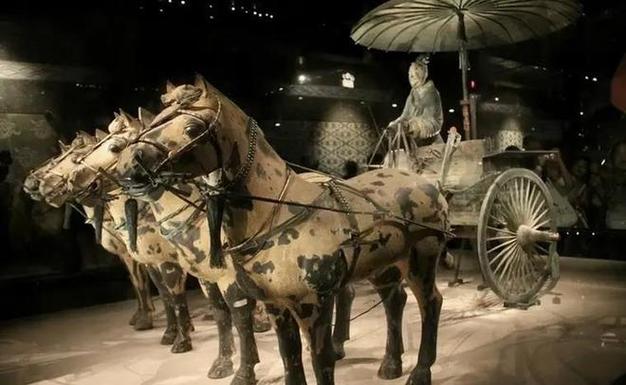
The Terracotta Army: Guardians of an Emperor
A Discovery That Unveiled History
On March 29, 1974, a group of farmers digging a well near Xi'an, China, stumbled upon one of the most significant archaeological discoveries of the 20th century: fragments of terracotta figures that would soon be recognized as part of an army numbering in the thousands. This marked the beginning of excavations that unveiled the awe-inspiring Terracotta Army, a testament to the power and ambition of China's first emperor, Qin Shi Huang Di.
The Emperor and His Afterlife
Qin Shi Huang, who unified China in the 3rd century BC, was obsessed with achieving immortality. He envisioned an afterlife mirroring his earthly power, and thus commissioned the creation of a vast necropolis to house his tomb and an army of terracotta warriors to protect him in the afterlife.
An Army Frozen in Time
Over 8,000 life-size terracotta soldiers, chariots, horses, and even acrobats stand in military formation within three large pits near the emperor's burial mound. Each figure is unique, with individualized facial features, hairstyles, and armor, showcasing the skill and artistry of the Qin dynasty craftsmen.
The sheer scale of the Terracotta Army is staggering. The soldiers were arranged in battle formations, reflecting the military might of the Qin dynasty. The meticulous attention to detail, from the intricate armor to the individualized facial expressions, is a testament to the skill and craftsmanship of the artisans who created them.
More Than Just Soldiers
While the soldiers are the most numerous, the Terracotta Army also includes terracotta horses, chariots, and even musicians and acrobats, suggesting the emperor's desire for a complete and entertaining afterlife. The figures were originally painted in vibrant colors, but exposure to air after their burial caused much of the paint to flake off.
A Window into the Past
The discovery of the Terracotta Army provided invaluable insights into the military organization, weaponry, and cultural practices of the Qin dynasty. The figures offer a glimpse into the past, illustrating the clothing, hairstyles, and military equipment of the time. The discovery revolutionized our understanding of ancient China and continues to captivate visitors from around the world.
FAQs
1. What is the significance of the Terracotta Army?
The Terracotta Army is significant for several reasons. It is a unique and awe-inspiring example of ancient Chinese art and craftsmanship, showcasing the high level of skill and artistry of the Qin dynasty. It also provides invaluable insights into the military organization, weaponry, and cultural practices of the time.
2. Why was the Terracotta Army created?
The Terracotta Army was created to accompany Qin Shi Huang, the first emperor of China, in the afterlife. He believed that the terracotta figures would protect him and allow him to rule in the next world just as he had in life.
3. Where can I see the Terracotta Army?
The Terracotta Army is located within the Mausoleum of the First Qin Emperor, a UNESCO World Heritage site located approximately 25 miles east of Xi'an, China. Visitors can explore the excavation pits and marvel at the sheer scale and detail of this ancient wonder.
note: This return of all, without the author's permission, may not be reproduced